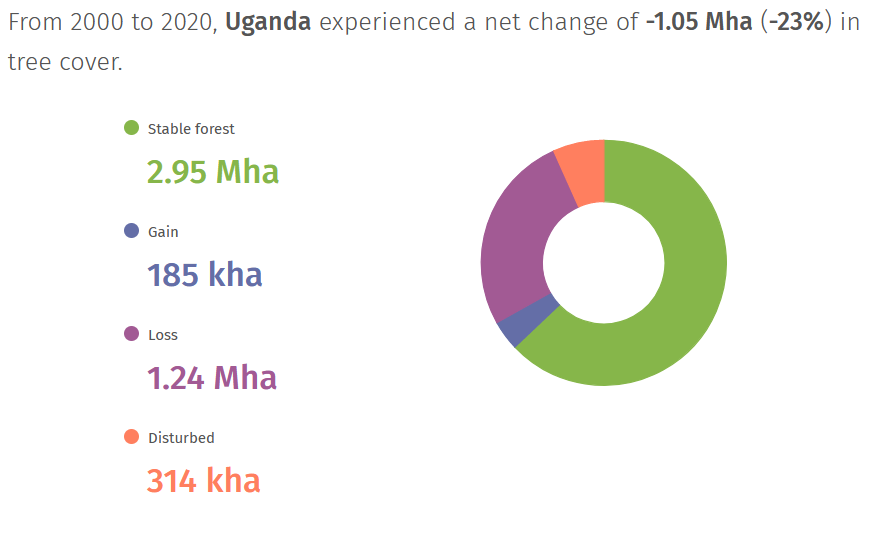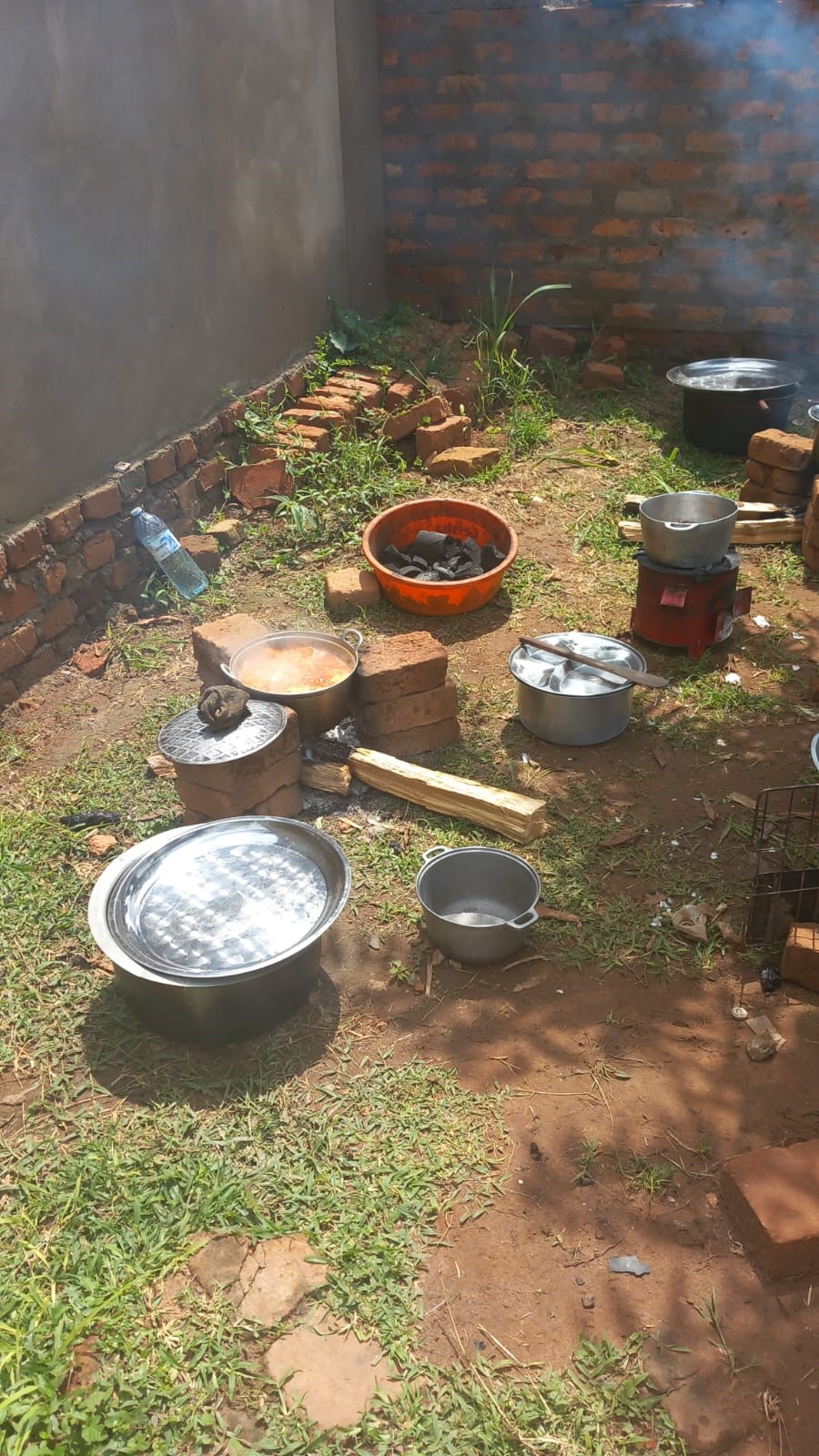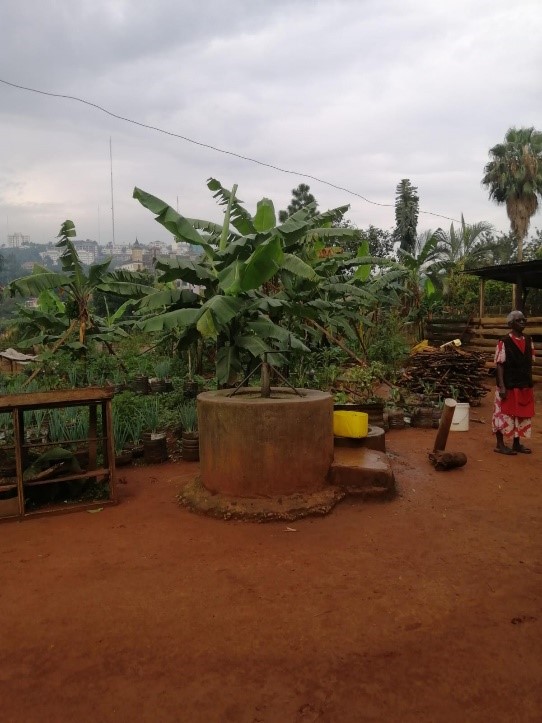Uganda’s forests are declining at an alarming rate amid the widespread use of traditional biomass for cooking. As only 5% of the population can access clean cooking solutions, Sarah Helen Rüdenauer explores how alternative options can combat deforestation while addressing economic challenges and raising awareness of sustainable energy practices in rural Uganda.

Forest cover Mbazzi, Mpigi district, Uganda. Credits: CIFOR | Flickr, CC BY-NC-ND 2.0.
The extensive utilization of biomass in Uganda and the subsequent deforestation it entails requires immediate attention. As highlighted in the introductory blog about Uganda’s energy sector, the country’s primary energy source heavily relies on traditional and unsustainable biomass usage.
Energy demands are typically categorized into power, heat, and transportation. In Uganda, individual energy needs are primarily centred around cooking through biomass, followed by lighting through electricity, fuel, or candles. Given the limited vehicle ownership in Uganda, individual fuel consumption remains relatively low.
However, let’s shift our focus to the predominant energy consumption pattern in Uganda, which revolves around the use of bioenergy for cooking purposes. Biomass accounts for 99% of the renewable energy supply, but unfortunately, most is used unsustainably leading to an annually cut down of the country’s forests by 2.6% in 2019, according to the World Bank.

Figure 1 Accessed through Global Forest Watch on 04/10/2022. www.globalforestwatch.org.
The Global Forest Watch reported a total decrease of 1.05 Mha between 2000 and 2020 in Uganda as shown in Figure 1. The stable forest, those not already significantly disturbed nor facing predictable near-future risks of anthropogenic disturbance, reached over the same period of time only 2.95 Mha.

Photo: Traditional cook stoves, Sarah Helen Rüdenauer, All Rights Reserved.
Conventional cooking methods involving wood or charcoal stoves are widespread. The extensive reliance on wood for cooking is contributing to deforestation, which in turn has severe implications for the climate, soil quality, food production, and water resources.
One of the key challenges that demands immediate attention is raising awareness about alternatives to traditional cooking with wood and charcoal, referred to as “clean cooking” solutions. The access to clean cooking in Uganda is as low as 5%. To address this, numerous NGOs, initiatives, state agencies, and companies in Uganda’s energy sector are encouraging energy-efficient stoves, biogas stoves, electric cooking solutions, and solar cookers.
Energy-efficient stoves resemble traditional wood and charcoal stoves but boast improved insulation and regulated airflow that enhance combustion efficiency. The Ugandan economy offers a variety of energy-efficient stove models and sizes. One of the biggest benefits of energy efficient stoves is that they resemble traditional stoves and are easily adaptable. However, it’s important to note that wood or charcoal still serve as the energy sources for cooking in these stoves.
Despite existing for decades, solar cookers remain largely unfamiliar and under-utilized. These cookers operate by harvesting sunlight to heat a cooking pot. Concave mirrors concentrate sunlight onto a single focal point, where the cooking pot is placed, converting light energy into heat energy.

Credits: Solar cooker | Flickr, CC BY 2.0.
Another viable alternative to combat deforestation is adopting electric cooking solutions powered by solar energy. Such setups generate electricity through photovoltaic panels, which is then converted to power an electric stove. Despite Uganda’s consistent high solar irradiation throughout the year, these solutions have not yet gained widespread acceptance due to lingering skepticism about their reliability and high upfront costs.
Lastly, biogas technology is promising for cooking because of its alignment with the circular economy concept. Various organic materials, including household waste, agricultural residues, animal dung, wastewater, and even municipal waste, can be utilized for biogas production.

Photo: Biogas plant in Kampala, Sarah Helen Rüdenauer, All Rights Reserved.
In Uganda, where waste management is a challenge, the adoption of biogas plants to produce cooking gas from waste materials could be highly beneficial. Another notable advantage of biogas production is its simultaneous creation of a high-quality natural fertilizer as a secondary output. During the anaerobic digestion process, biogas and digestate are produced. The digestate is the solid or liquid residue that contains the nutrients and organic matter. This fertilizer holds substantial value for agricultural applications, particularly in responding to issues of soil degradation and insufficient nutrient restoration.
In this context, the byproduct of biogas production, doubling as a nutrient-rich fertilizer, emerges as a crucial factor in rejuvenating and enriching soil fertility. This aspect gains particular significance in regions where soil health has been compromised. According to FAO the most common soil type in Uganda is Ferralsol, which is depleted in nutrients, highly weathered and comparatively infertile soil.
Therefore, biogas production offers a sustainable avenue to augment agricultural yields while effectively addressing the challenge of nutrient exhaustion. The primary obstacle on the road ahead is not identifying alternative and sustainable energy sources, as explored above, but rather, the challenge resides in establishing a widely accepted and integrated energy source that can be sustained over the long term and is dependable.
Furthermore, the cost of procuring different fuels, cooking solutions, or systems can be daunting for many Ugandans. This is especially true in rural regions, where the majority of the population resides. In these areas, wood is often readily available on their own land or locally accessible. Unfortunately, many people in these regions are unfamiliar with the science on the severe consequences associated with deforestation.
In essence, the task at hand is to introduce viable alternatives while also fostering a broader understanding and recognition of the impact of deforestation. The challenge is to shift established practices towards more sustainable options while addressing economic limitations, particularly in rural settings where wood-based solutions are widespread. This requires a comprehensive effort to raise awareness, encourage acceptance, and ensure the long-term viability and reliability of alternative cooking and energy solutions.
Overall, renewable energy offers many opportunities to address Uganda’s deforestation problem. For example, using renewables reduces dependence on traditional biomass cooking, which is one of the main threats to forestation. Clean energy sources such as solar energy, sustainable use of biomass and biogas offer viable and efficient cooking alternatives while also protecting the environment and remaining affordable.